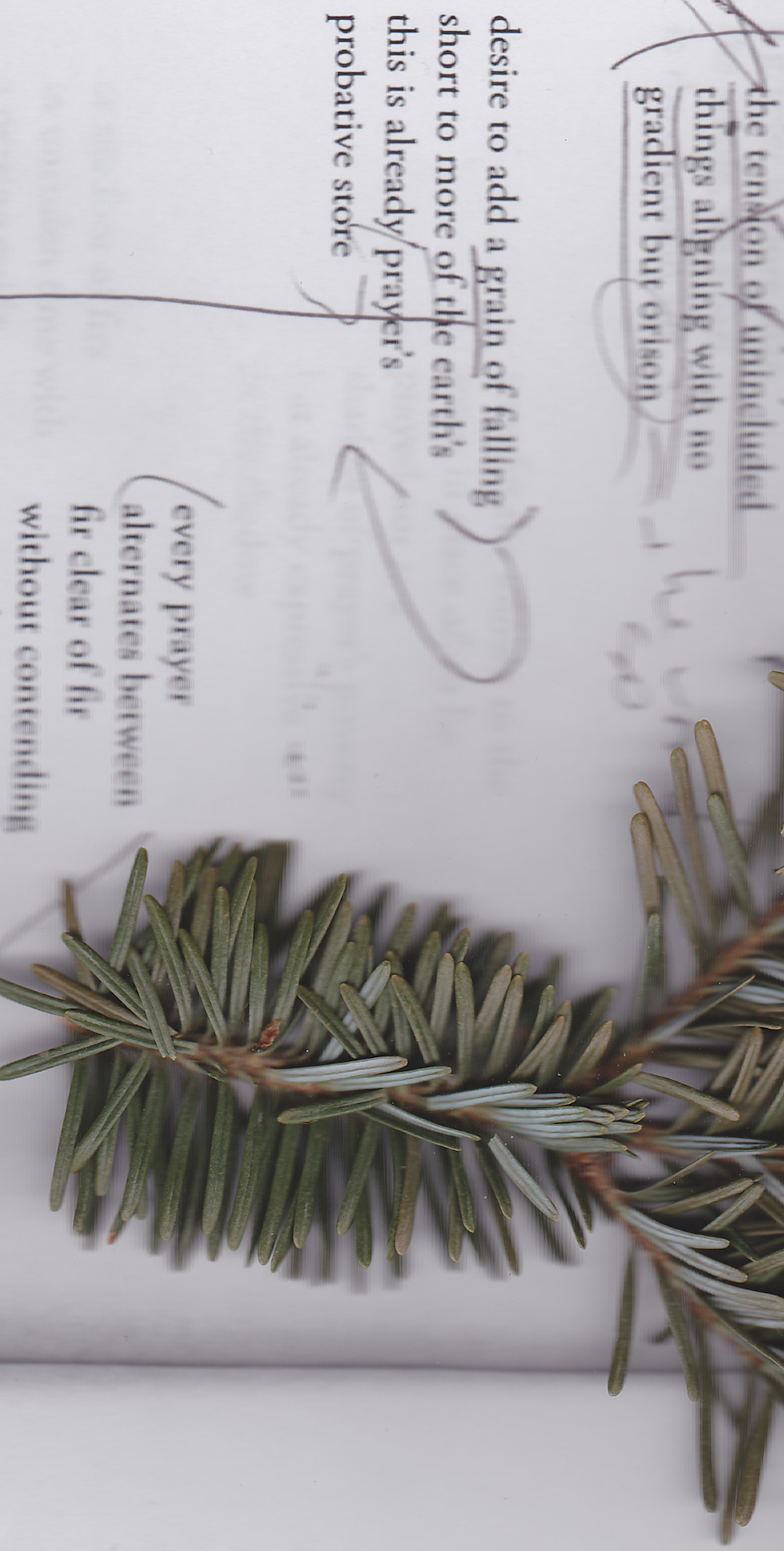David James Miller
Reciting Silence
firs in faith of angularity ingrained
firs in case of singularity arrayed
firs at base a seedling tethers
firs at praise enlaced alike hazard [i]
With their particular sense of the incantatory, these lines open “praying // firs \\ attenuate,” the final section of Peter Larkin’s collection Give Forest Its Next Portent. Each line structurally, metrically mimics the last in near-liturgical foment and repetition, recalling the structure of formal prayer services or offices. Locating a particular moment in Larkin’s collection, these lines speak too across the remnant of the poem, as might a consecratory or offertory prayer. Jean-Louis Chrétien asserts that prayer is “the religious phenomenon par excellence,” as it is “the sole human act that opens the religious dimension and never ceases to underwrite, to support, and to suffer this opening.” [ii] This opening—the sole ‘wound’ upon divine silence that humans may call into being—is still yet initiated by the divine, Chrétien notes, reciprocally wounding the human word: “the speech act seems to be made possible by the silence of divine hearing; this is the silence that gives it a chance to speak. Speech is received from it; it incites speech.” Yet silence “makes up a possibility proper to speech, which alone can fall into silence, can, by the act of keeping silent, transform silence into an act of presence, and not into privation.” As in Larkin’s poem: “[p]rayer sighs up without notice” past the cusp of impossibility, bringing into being an intra- and contra- of language. Too, “the earth is also a privatory language not yet debarring the rareness of its concurrence,” where silence and presence do not compete, but where prayer and fir both “connect the rash at unfelled tops / a sighing norm of prayer.”
Prayer admits in its being. Confronted, prayer limns its consecration. “Radical alterity”[iii] confides itself in the human struggle for con-fidelity with what Larkin rightly describes as an “other-than not what is alterity to a world’s non-origin”: address sighs a wound in access; access wounds the sigh of address.
John Taggart writes that “once a grid of sound has been established, a sound field, nothing newer than a word allowed to re-sound by itself: alone on its line, itself its line, relatively alone in page space, [the] space of the sound field... must be entered and opened, re-entered and reopened.”[iv] Larkin’s poem embodies such in an attuned language, enacting a community as such recitation affords, enabling accord across void/s of difference and silence. Recitation’s mimicry allows embodiment of one in/and another—presencing in the case of absence; presencing silence. One recites, connecting “the praying man [with] the words composed by another in such a way that they are the highest expression of himself in this place of radical unsubstitutable, intimate truth that is his presence to God.”[v] Alternating between prose and verse stanzas, Larkin’s poem arrives nearest an apex in a central prose stanza with language tuned most like a supplication:
“[b]e lessened in world so as not to assuage its brunt taken at the full let new tallnesses taper with the close-grown of it over every leached place a spine of outliving become the norm, saddled with already a multiple awakened least equivalent firs but the prayer-accord has no other junction-weed to put before its equanimity”. (Give Forest Its Next Portent, 178)
Here, “new tallnesses taper,” combining with lessness, recalling sound’s attenuation, its dispersal toward silence—a dispersal where, as Taggart states: “the resonance of a word [is] taken away, ‘the sound of silence’ which is anything but silent in the ear of the one who does the taking. The remnant is never only the remnant.” This is particularly resonant given the poem too becomes attenuate, as a “lessness in gift lent onwards to prayer.”[vi] Tapering in its final lines, the language rests indeed with a resonant peal across silence: “because there are / no such aisles / in prayer”.
[i] Peter Larkin, “praying // firs \\ attenuate,” in Give Forest Its Next Portent (Shearsman, 2014), 161-193
[ii] Jean-Louis Chrétien, “The Wounded Word: The Phenomenology of Prayer,” trans. Jeffrey Kosky, in Phenomenology and the “Theological Turn”: The French Debate (New York: Fordham University Press, 2001), 147-175.
[iii] Chrétien
[iv] John Taggart, “from Chicago Breakdown,” in Facture 3 (http://www.webdelsol.com/Facture/
poems/JohnTaggart.pdf)
[v] Chrétien
[vi] Larkin, Give Forest Its Next Portent, 193.

